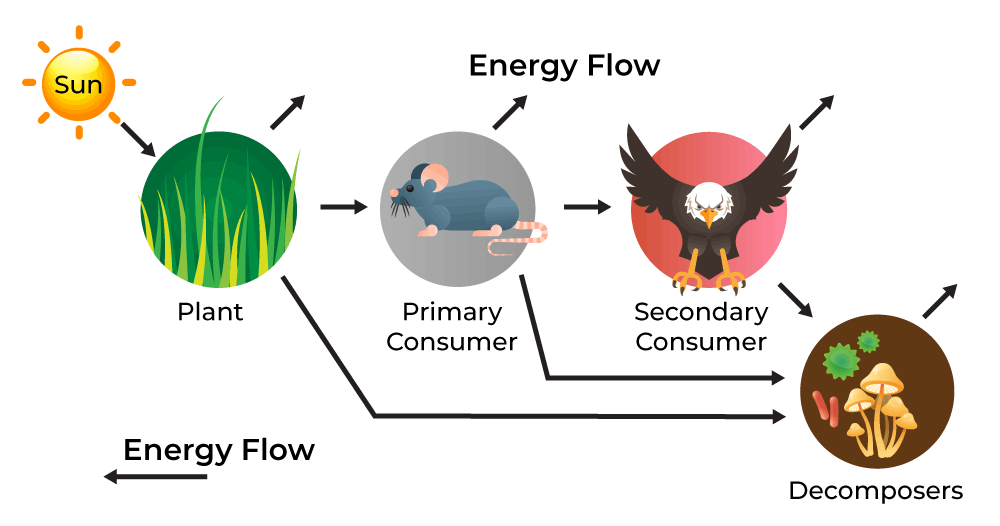Energy Flow In An Ecosystem
Key Notes:

What is an Ecosystem?
- An ecosystem is a community of living organisms (plants, animals, and microorganisms) interacting with each other and their physical environment.
- Producers, Consumers, and Decomposers:
- Producers (usually plants) are organisms that capture energy from the Sun through photosynthesis and convert it into food (usually glucose).
- Consumers are animals that obtain energy by eating other organisms.
- Decomposers are organisms like bacteria and fungi that break down dead organisms and organic matter, returning nutrients to the ecosystem.
- Trophic Levels:
- Ecosystems are organized into trophic levels based on an organism’s position in the food chain.
- Primary producers are at the first trophic level.
- Herbivores (plant-eating animals) are at the second trophic level.
- Carnivores (meat-eating animals) are at higher trophic levels.
- Food Chains and Food Webs:
- A food chain shows the linear transfer of energy from one organism to another.
- A food web represents a more realistic and complex pattern of energy flow in an ecosystem, showing multiple interconnected food chains.
- Energy Transfer:
- Energy is transferred from one trophic level to the next, but not all energy is transferred. Much of it is lost as heat during metabolic processes.
- As a result, there is less energy available at higher trophic levels, which is why there are fewer organisms at these levels.
- Energy Pyramids:
- An energy pyramid illustrates the decreasing amount of energy available at each trophic level.
- The base of the pyramid represents the primary producers and contains the most energy, while the top levels have the least energy.
- Bioaccumulation and Biomagnification:
- Some substances, such as toxins, can accumulate in organisms as they move up the food chain, a process known as bioaccumulation.
- Biomagnification occurs when these substances become more concentrated at higher trophic levels, posing a greater risk to top-level predators.
- Human Impact:
- Human activities, such as deforestation, pollution, and overfishing, can disrupt energy flow in ecosystems and harm biodiversity.
- Conservation efforts are crucial to maintain the balance of energy flow and protect ecosystems.
- Conclusion:
- Understanding energy flow in ecosystems helps us appreciate the interconnectedness of all living organisms and the importance of maintaining ecological balance for a sustainable future.
Let’s practice!

